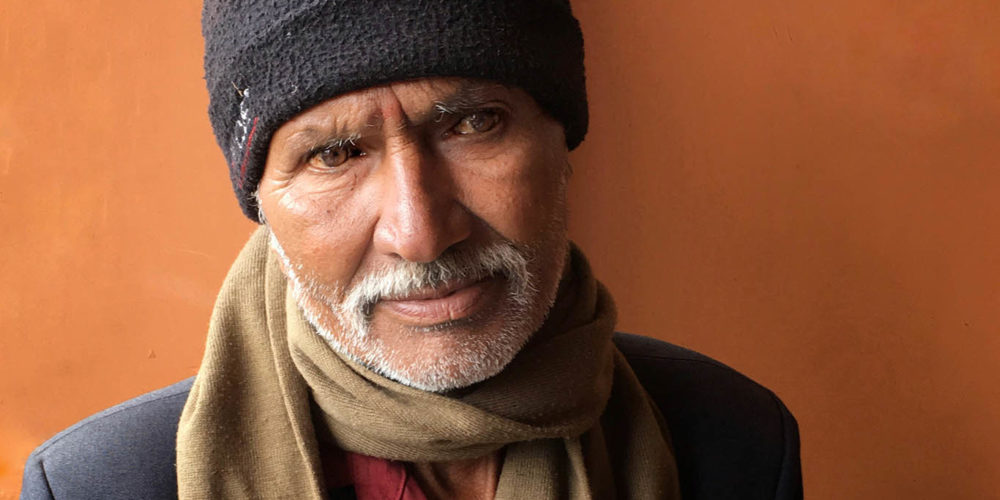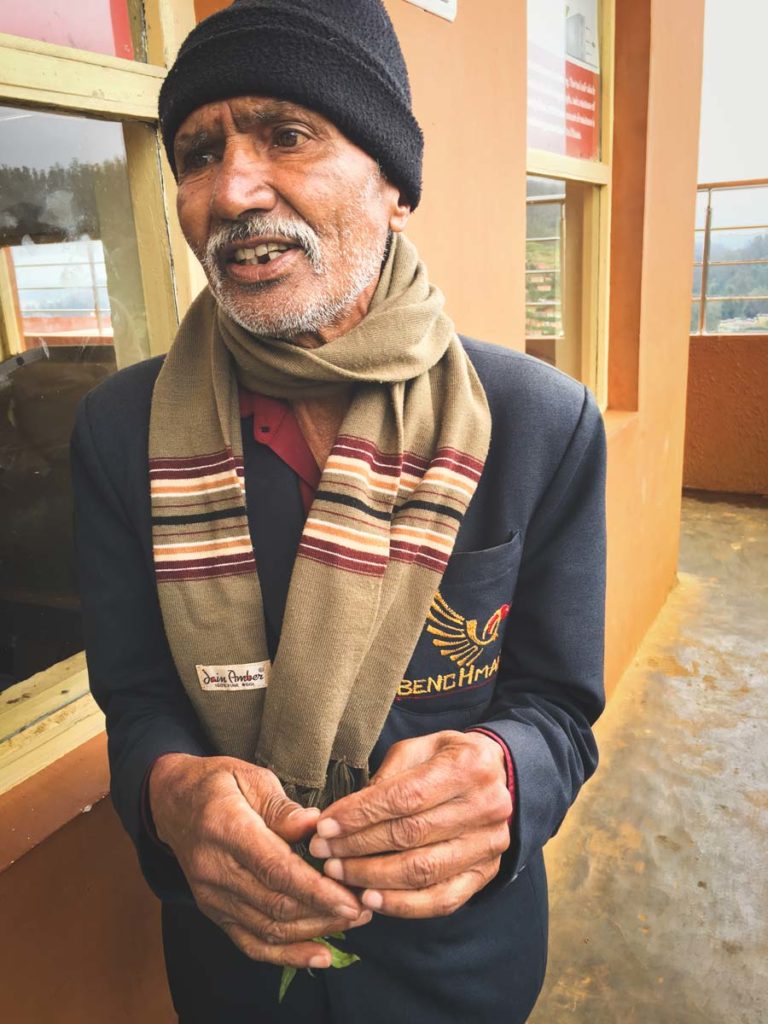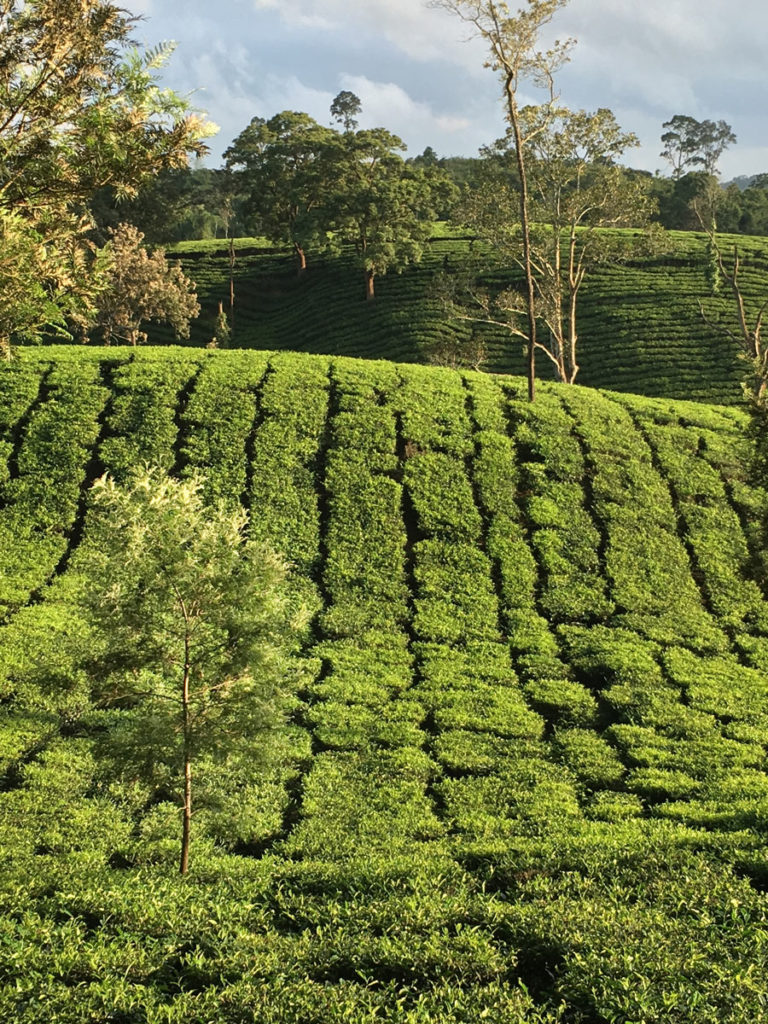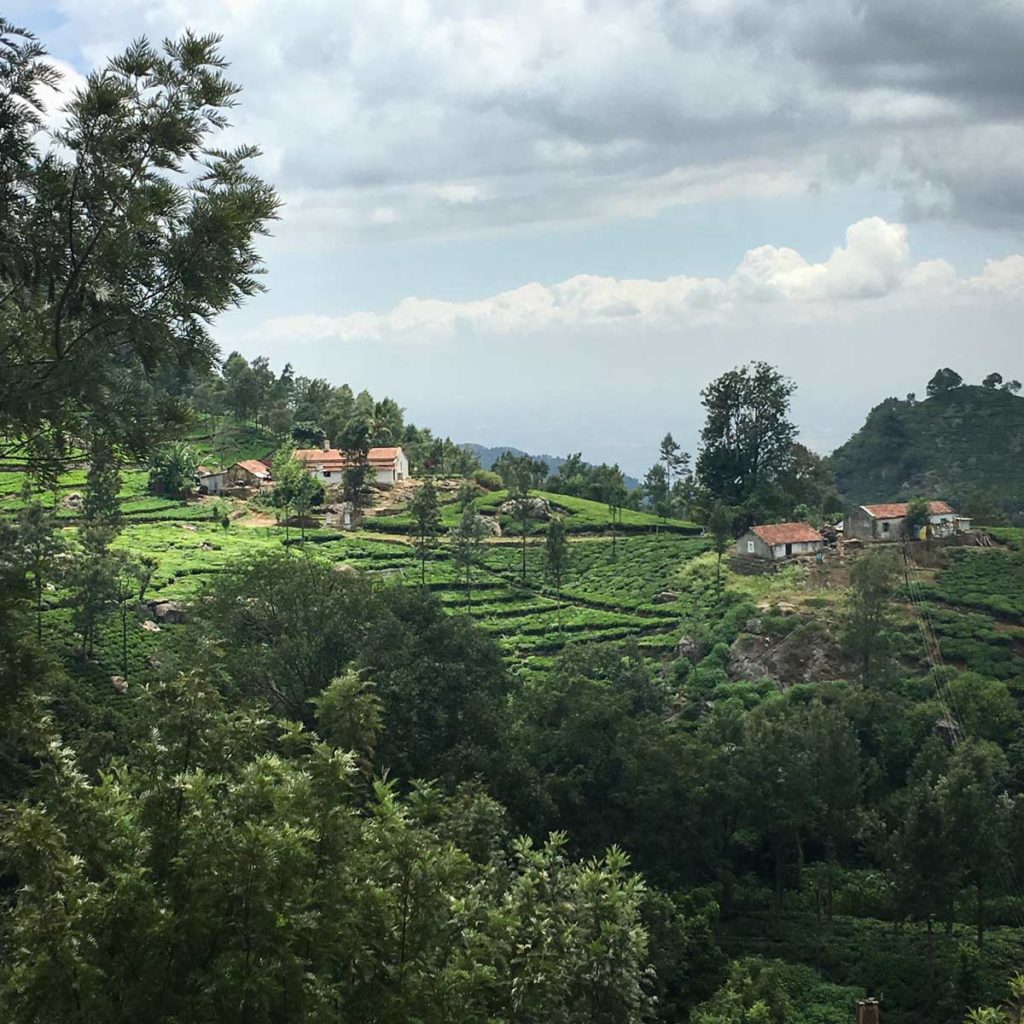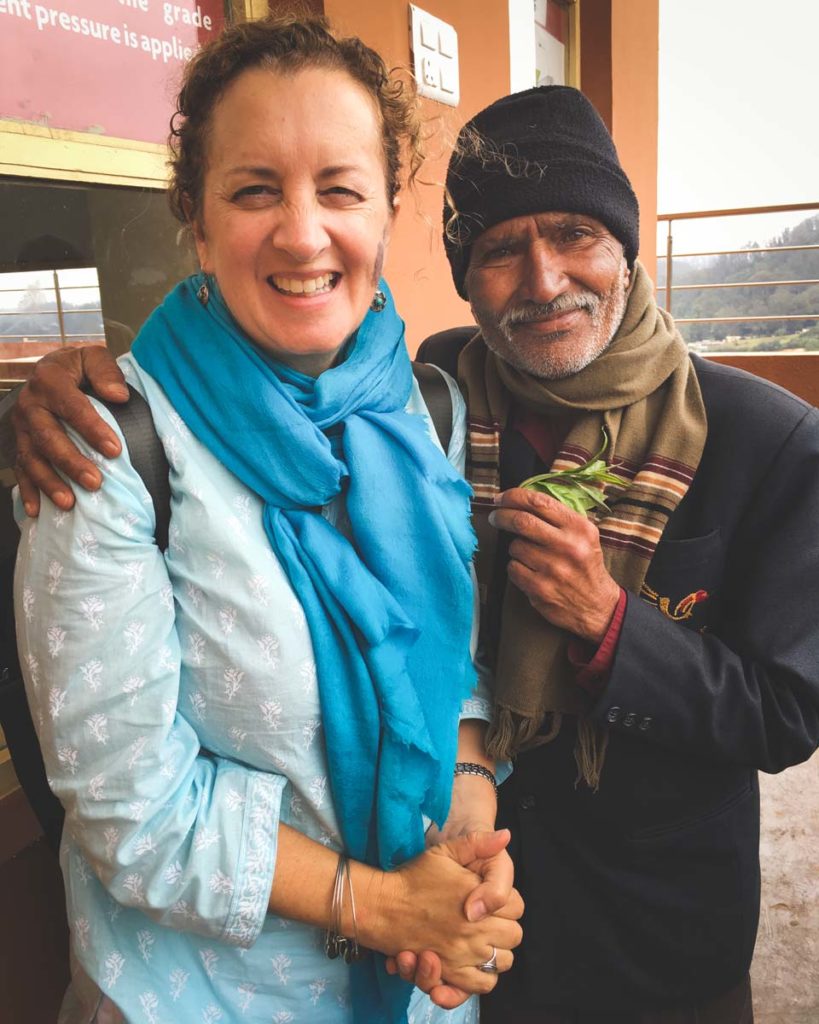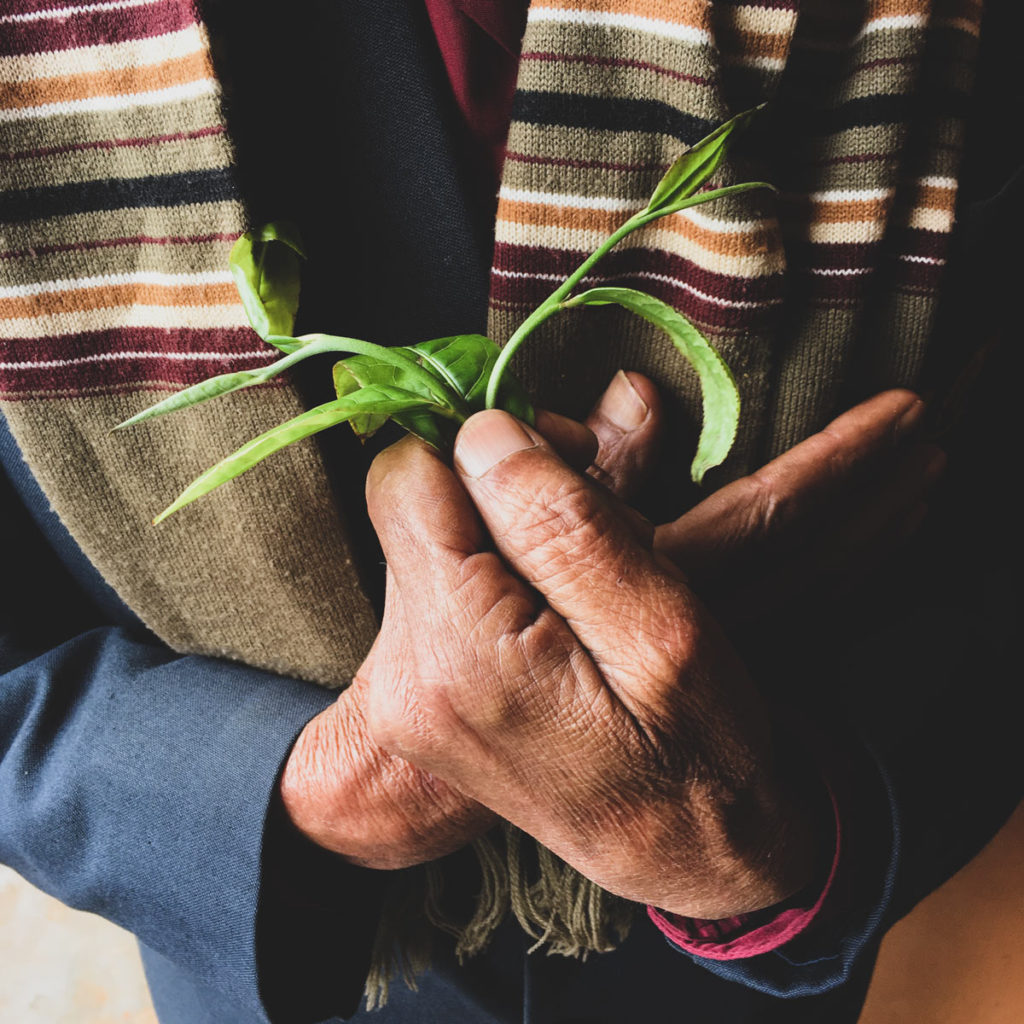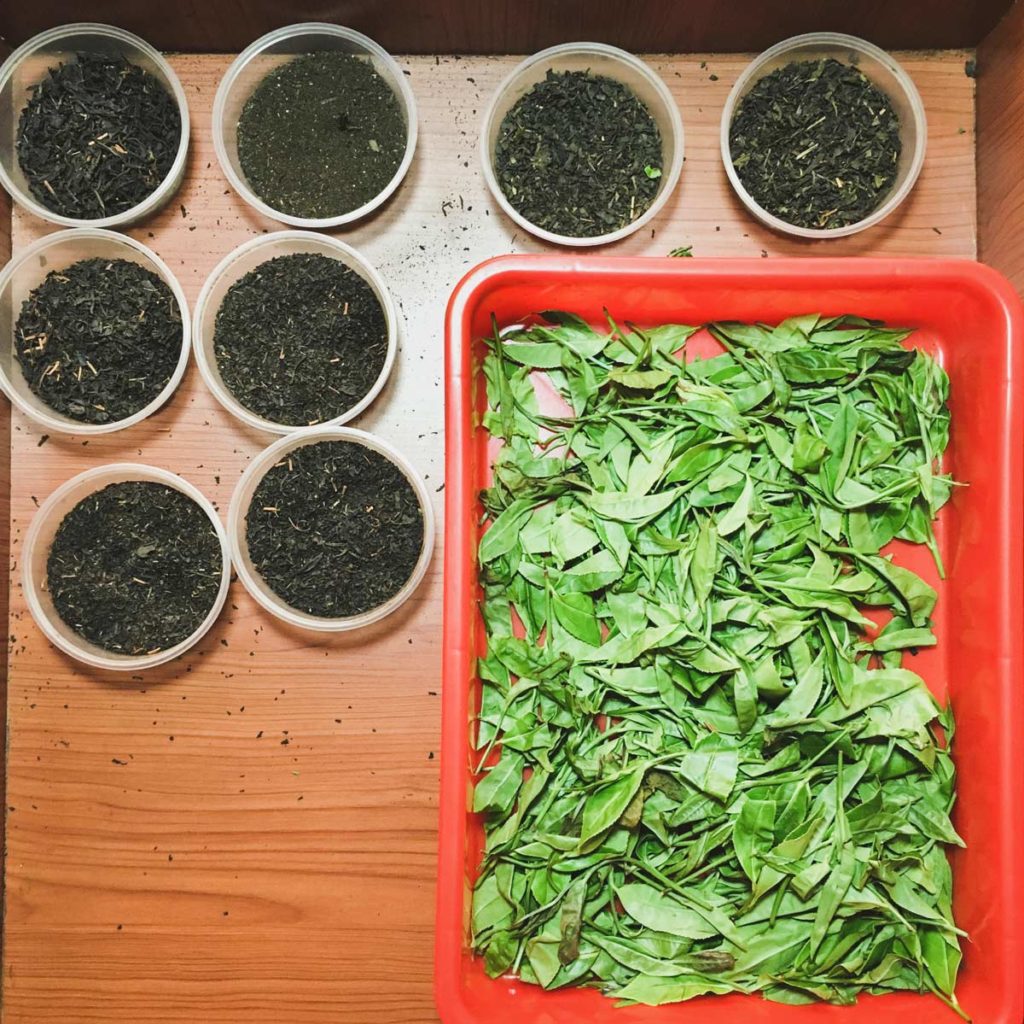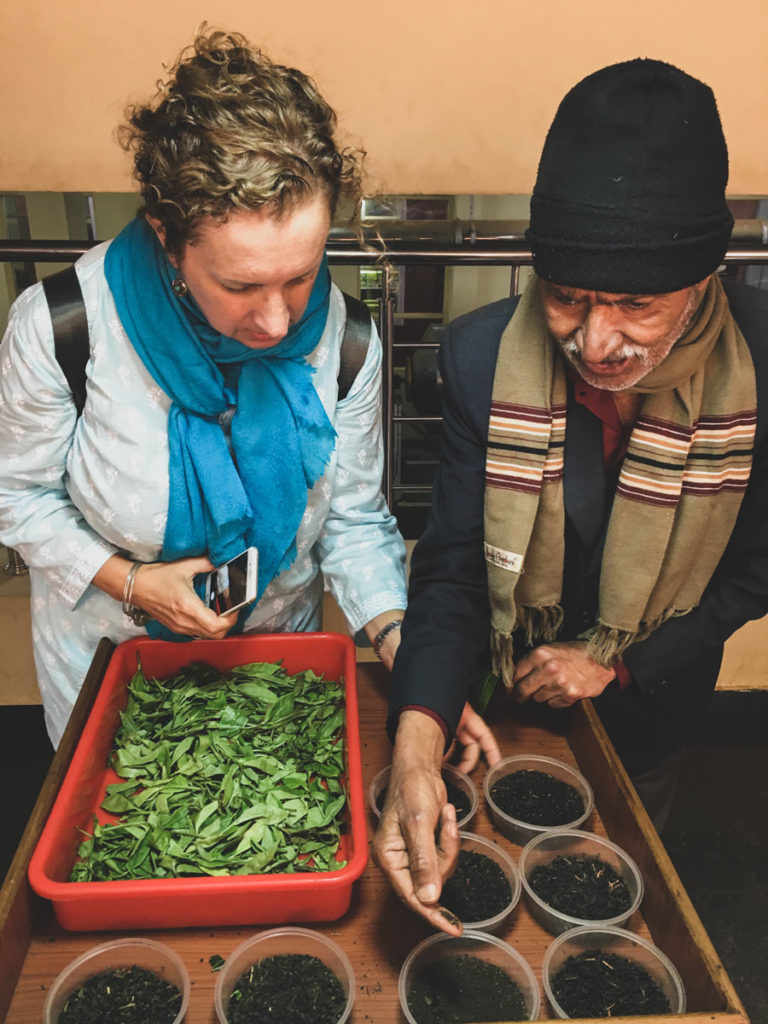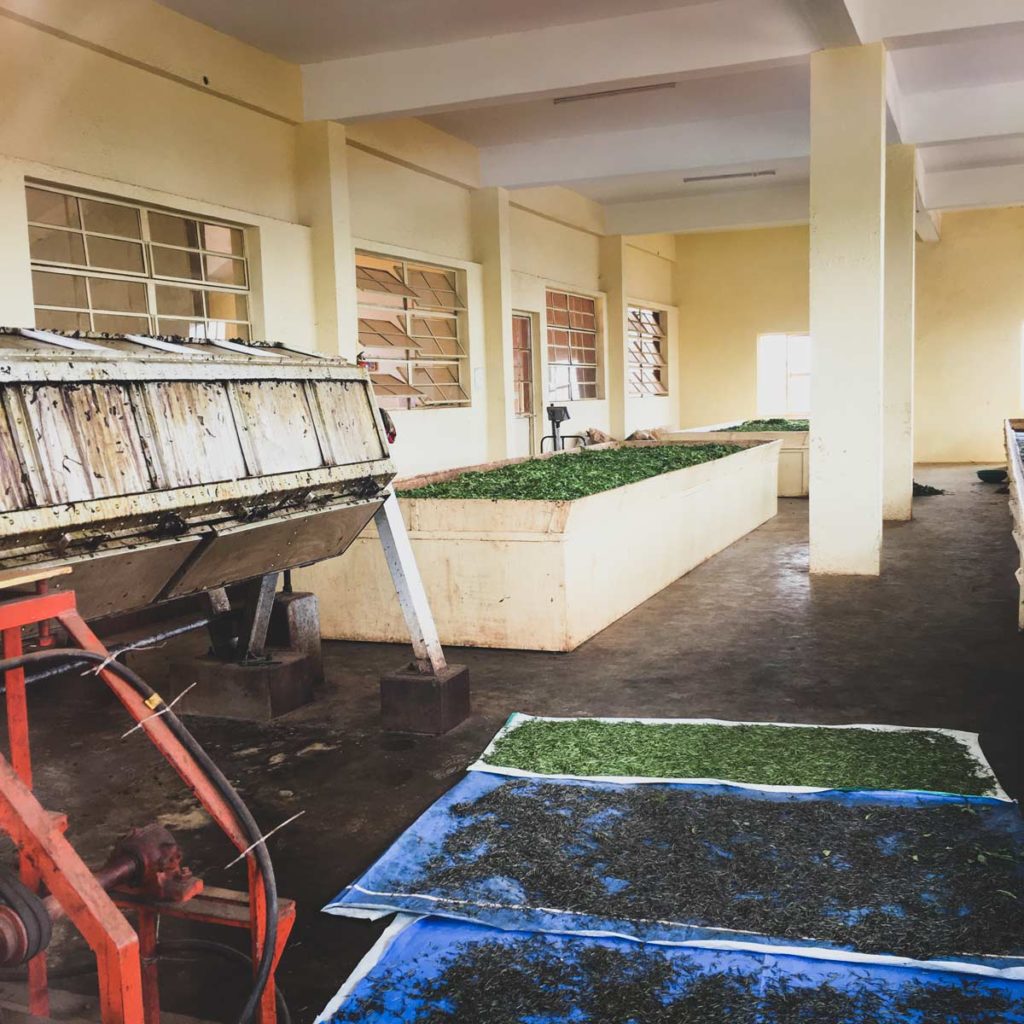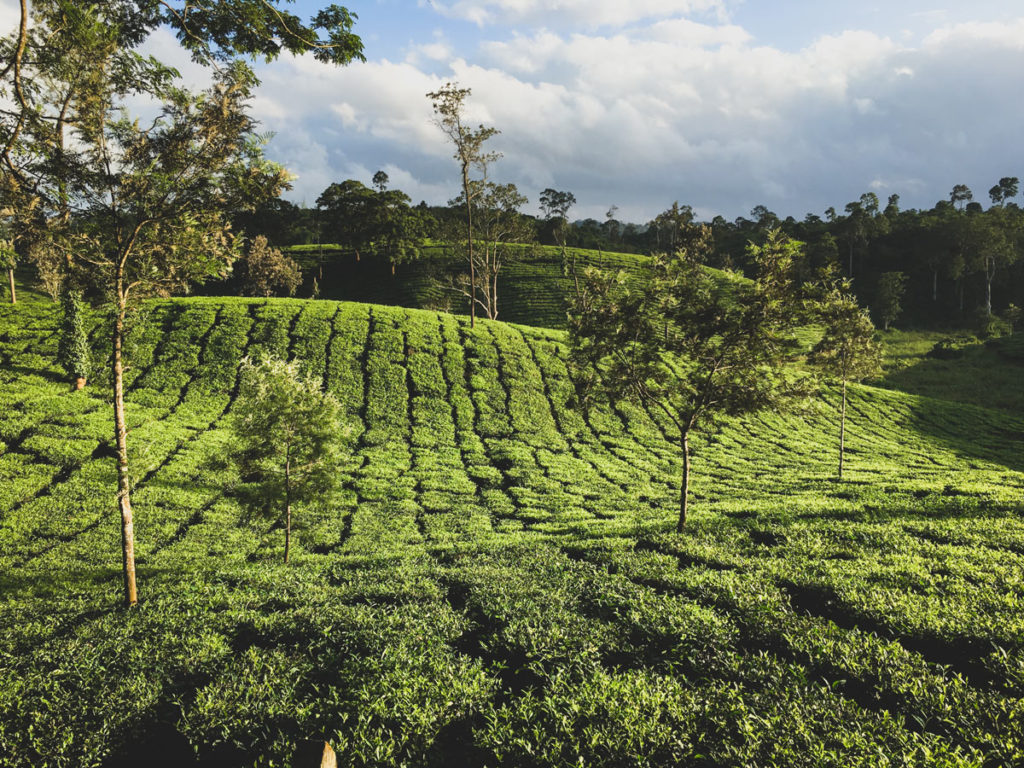Ironically, it was just about tea time, when Nanjundan approached. We were looking into the big windows of the production floor at the Benchmark Tea Factory and Museum near Ooty, Tamil Nadu. His smile revealed a large gap where a bottom tooth should have been. A beard of silver stubble hinted at his age.
Tea Country
We’d left Coimbatore and its warm, dry Villangiri (white) hills that morning to climb higher and higher to Ooty and the Nilgiri (blue) hills. Along the way, the crops changed from tall coconut palms and swaying banana plants to bright, shiny green chest-high tea bushes.
Have you ever seen a tea garden? Perhaps you imagine it as an oversized rose garden or maybe a large vineyard? If so, you will be blown away by the actuality.
India’s tea gardens are sweeping hills of bright spring pea-green bushes. Dotted with silver oaks, they cover hectare upon hectare. Small towns and narrow snaking roads are the only interruptions to their constant verdancy.
Workers prune the tea bushes to chest height and plant them close together. The oaks sprout into the sky at regular intervals to help retain moisture and prevent erosion.
Tea-pickers walk on the sides of the narrow roads balancing bright sacks of leaves on their heads and backs. Others, with hands flying, are still picking their daily quota up in the narrow rows on the steep hillsides. Somehow, they manage to look up, smile and wave if you pass close enough.
Stepping from the car at the tea factory, low-lying rain clouds and a damp mist formed our welcome committee. This is the weather that makes the Nilgiri hills perfect for growing tea. But, throw a little breeze into the early afternoon air and it was a chilly greeting by Canadian – let alone Indian – standards.
Tea Guide
Nanjunan must have been used to the weather. He compensated for the thin blue blazer he wore by pulling a black wool toque down over his head and wrapping a scarf snugly around his neck.
He held a tea leaf between his two clean, well-manicured hands and bowed to us while saying a soft Namaskaram. This is the traditional greeting of South India. It means, I bow to the good in you. “Would you ladies like a tea talk and tour?” he asked.
Usually, when we research a destination, we line our local guides up well ahead. But sometimes, when we are making a spontaneous stop to stretch our legs or do a little shopping, a guide will offer their services for a small fee. What would you do if Nanjundan had approached you?
When we have the time, we go with such an offering. Spontaneity often breeds serendipity.
The caveats to this rule are that you must never leave the public area you are touring at the suggestion of a guide. And, you should always settle the money question up front.
The con in this situation is that you might get conned if the guide does not have proper training. The pros are that you can help someone earn a dignified living while gaining a local’s insider knowledge.
To Nanjundan, we replied, Sure, how much? “You decide when we are done,” he said. Fair enough! We were off to the races.
Tea Tour
We spent about an hour on our tea tour. Nanjundan was knowledgeable, kind and attentive. He shared how white, green and black teas are created. Though all tea comes from one plant, Camellia sinensis, each type of tea has a different amount of time for oxidation and drying in the processing methods.
We saw the heating and drying areas and then we viewed tea leaves being cut, torn and curled by huge and very loud machines. This is known as CTC (cut, torn and curled) tea. It’s the grade used in tea bags.
Nilgiri is the least famous of India’s three tea growing regions. Assam and Darjeeling tend to get the attention. But, with tea growing at between 6000 to 8000 feet, Nilgiri has the distinction of being the highest tea growing region in the world.
Because most of the tea is CTC, it’s hard to find it as a loose-leaf product. But, when you do, it is smooth and aromatic with a natural sweetness.
Tea History
The British brought tea plants to the Nilgiri area in 1835 and it has been grown commercially here since the mid-1800s. Because the area receives two monsoons, Nilgiri tea plantations harvest year-round.
Nanjundan made sure we got to try all the teas the factory makes. He even scored an extra little cup of creamy cardamom-laced chai for us. Like all museum tours, we finished in the museum shop where we bought tea treats to take home. The prices were very reasonable.
We left Nanjundan with a mutual bow and “Namaskaram.” We were both happy with the transaction. And, best of all, we captured a brief video of Nanjundan’s tea talk so you can enjoy his company too. Though perhaps a little hard to understand, once you get used to his accent, you’ll see he’s steeped in tea knowledge.
For exciting things to do in Ooty and the Nilgiri Hills look for our next post. And expect a recipe for Creamy Cardamom Tea coming soon.

Gratitude
Thank you to the KTM Society and Travel XS for sponsoring our travel throughout South India in 2016. All words and photos are our own. We did not share them with the sponsors before publication.

